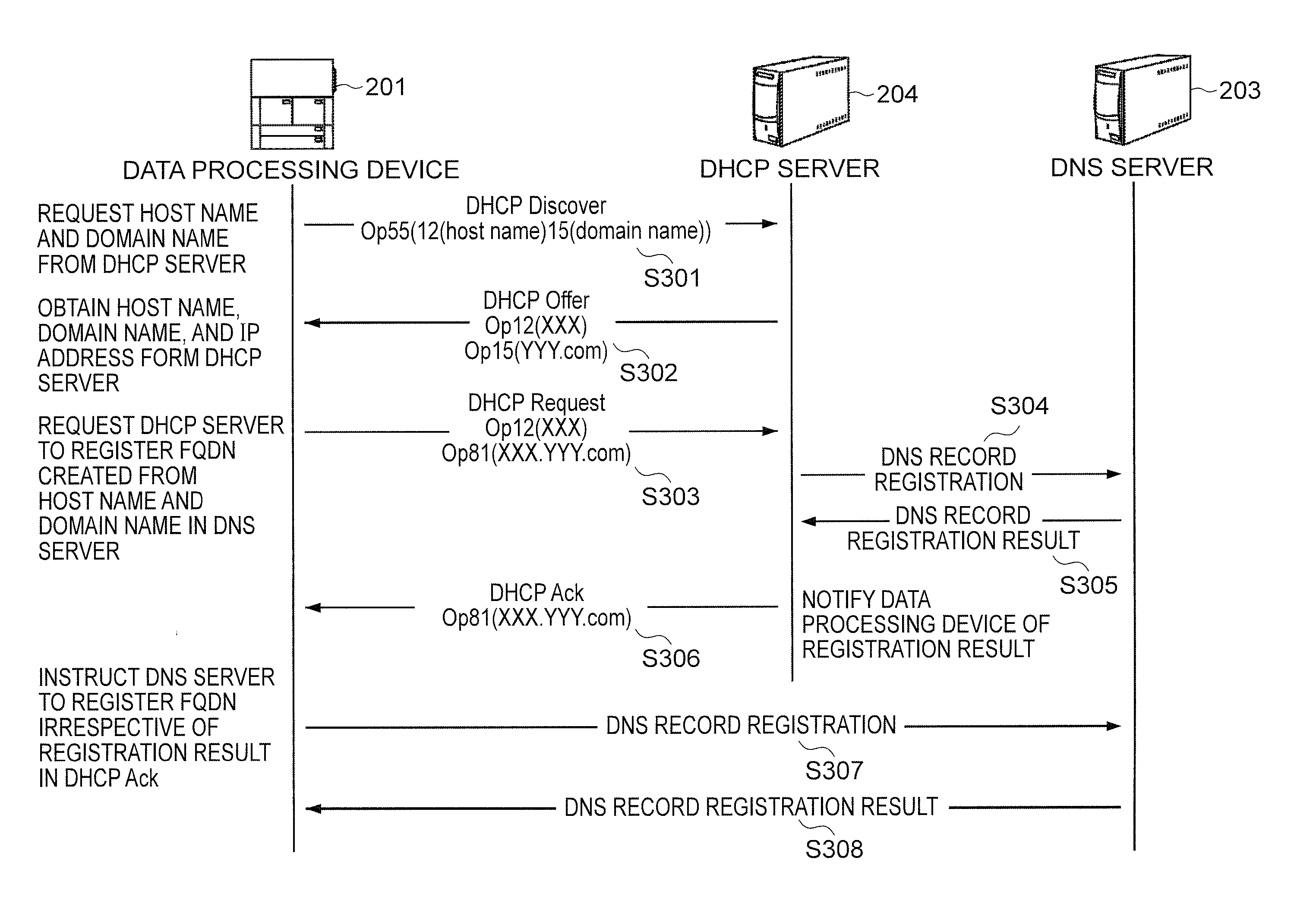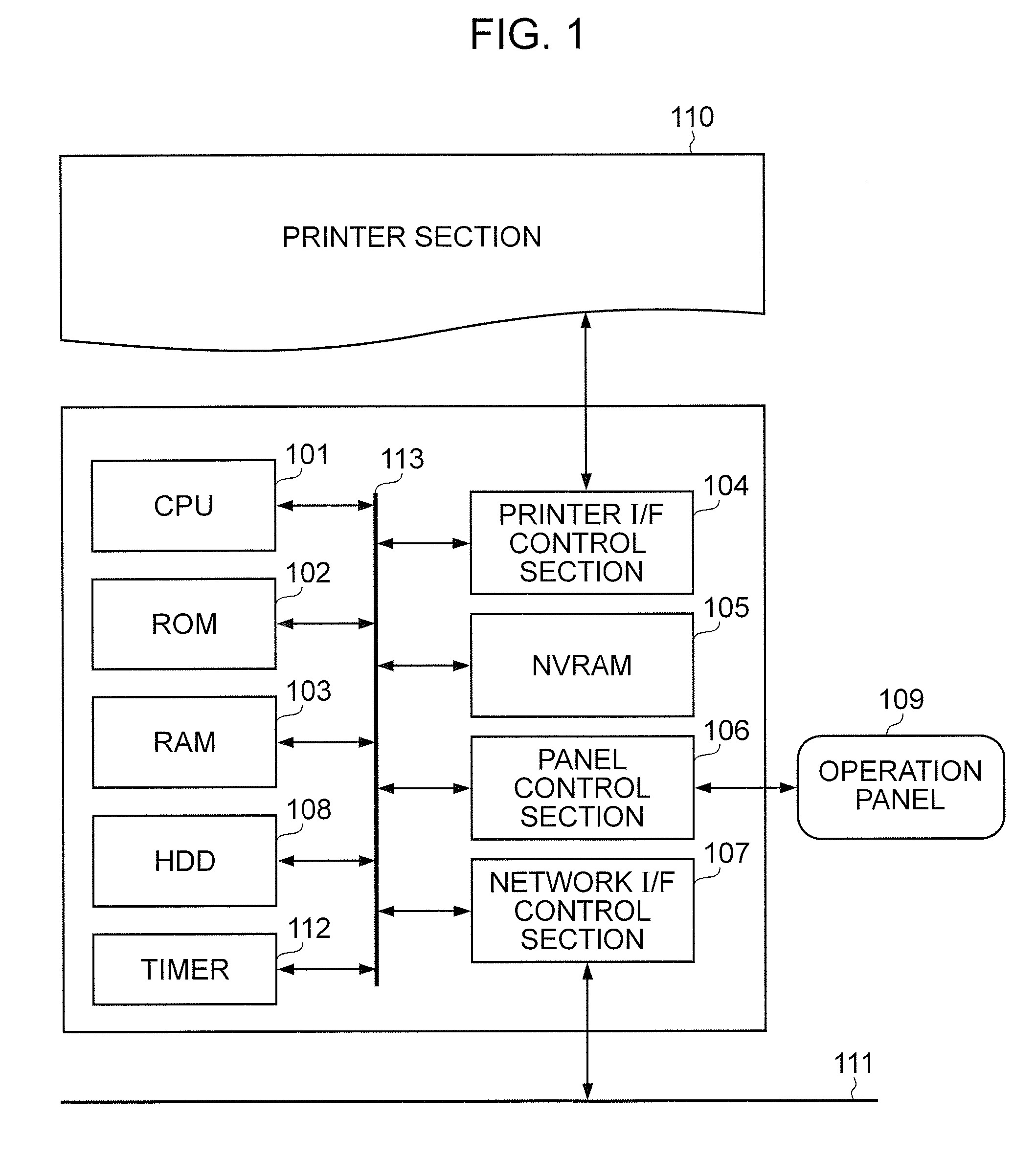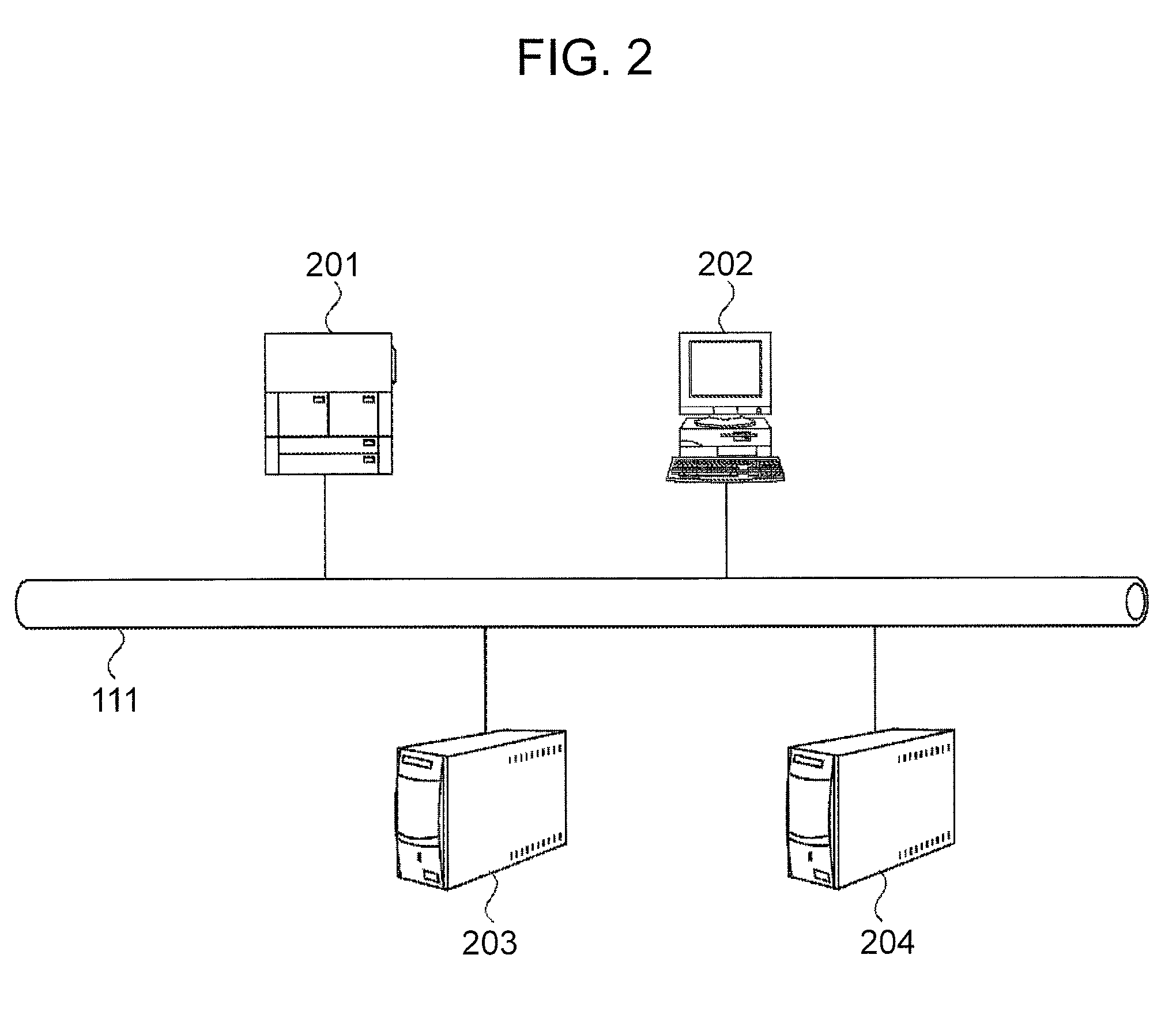Data processing device, registration method, and program
- Summary
- Abstract
- Description
- Claims
- Application Information
AI Technical Summary
Problems solved by technology
Method used
Image
Examples
first embodiment
[0029]FIG. 1 is a block diagram showing a hardware construction of a data processing device according to the present invention. Herein, a printing device is described as an example of the data processing device. The data processing device may be a network device, such as a multifunction device, a copying device, and a facsimile device, other than the printing device.
[0030] A CPU 101 controls the entirety of the data processing device by executing a software program of the data processing device. A ROM 102 is a read only memory. The ROM 102 stores a boot program, fixed parameters, and the like of the data processing device. A RAM 103 is a random access memory. The CPU 101 stores temporal data in the RAM 103 when the entirety of the data processing device is controlled.
[0031] A printer I / F control section 104 controls a printer section 110 to transmit image data to the printer section 110 and receive status information from the printer section 110. The printer section 110 prints ima...
second embodiment
[0064] In the first embodiment, irrespective of the content of the registration result in the DHCP Ack of S306, the data processing device 201 by itself instructs the DNS server 203 to perform the registration of the FQDN and the IP address. On the other hand, in a second embodiment, when the registration result in the DHCP Ack indicates success, the data processing device 201 does not transmit the registration instruction of the DNS record to the DNS server 203.
[0065] Hereinafter, a description will be given of the second embodiment. The hardware construction of the data processing device and the entire configuration of the network system are common to those in the first embodiment, and therefore the description given with reference to FIGS. 1 and 2 will be omitted here.
[0066]FIG. 6 is a flowchart for data processing executed by the data processing device 201. When the CPU 101 of the data processing device 201 executes a program based on the flowchart of FIG. 6, this data process...
third embodiment
[0080] Depending on the type of DHCP sever, the DNS registration function may not be prepared. Some DHCP servers transmit the DHCP Ack to which Option 81 is not specified, in response to the DHCP Request to which Option 81 is specified. Thus, when the data processing device 201 checks whether or not Option 81 is specified to the DHCP Ack, it is possible to clearly find out whether the DHCP server has the DNS registration function or not.
[0081] In view of the above, in a third embodiment, the data processing device 201 judges whether or not the DHCP server 204 makes a registration request to the DNS server 203 on the basis of the content of the DHCP Ack. When the registration function is not available, the data processing device 201 transmits the registration instruction of the DNS record to the DNS server 203.
[0082] Hereinafter, a description will be given of the third embodiment. The hardware construction of the data processing device and the entire configuration of the network s...
PUM
 Login to View More
Login to View More Abstract
Description
Claims
Application Information
 Login to View More
Login to View More - R&D
- Intellectual Property
- Life Sciences
- Materials
- Tech Scout
- Unparalleled Data Quality
- Higher Quality Content
- 60% Fewer Hallucinations
Browse by: Latest US Patents, China's latest patents, Technical Efficacy Thesaurus, Application Domain, Technology Topic, Popular Technical Reports.
© 2025 PatSnap. All rights reserved.Legal|Privacy policy|Modern Slavery Act Transparency Statement|Sitemap|About US| Contact US: help@patsnap.com



